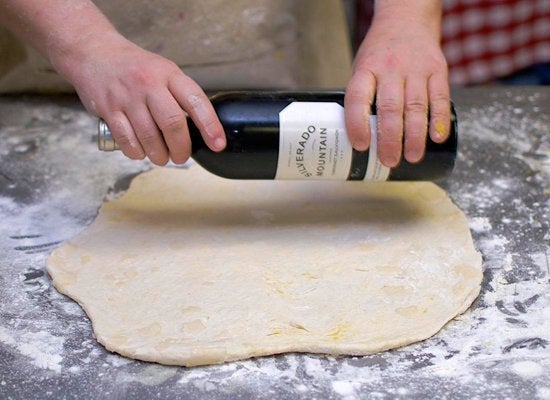
Ask any chef or home cook what the single most important tool in the kitchen is and he or she will almost certainly give you the same answer: a chef's knife. One, dependable all-purpose chef's knife -- and knowing how to use it -- is going to make the biggest impact on your cooking, whether you're a newbie in the kitchen or an experienced restaurant chef.
What most people overlook when they give or receive this answer is the knife's partner in crime: the cutting board. Often forgotten for its flashier, sharper-looking companion, the cutting board doesn't always get the attention it deserves. People assume all cutting boards are alike, and may not give much thought to size or material. If you've been using the same cutting board for every dish, or if you've simply never considered the difference between a wood or plastic board, we're here to correct your ill-informed ways.
Contrary to popular belief, plastic cutting boards are not automatically safer than wood. Studies have shown that wood can actually be more sanitary in the long run. People assume that because wood is a porous surface and plastic isn't, plastic boards are more resistant to bacteria. This assumption doesn't take into account the scars a plastic cutting board will get from daily use.
According to Rodale News, expert Dean O. Cliver, PhD from University of California, Davis, conducted research on the subject and found that wood cutting boards contained less salmonella bacteria than plastic. On wood cutting boards, the bacteria sank "down beneath the surface of the cutting board, where they didn’t multiply and eventually died off." On plastic boards, however, bacteria got caught in knife grooves that were near impossible to clean out, whether the board was washed by hand or dishwasher. So while sparkling new plastic cutting boards might be easy to disinfect, any weathered plastic board will hold onto bacteria.
There's still much debate on the matter, and the FDA's official opinion is that both wood and plastic are safe so long as they're cleaned well and replaced often. When boards "become excessively worn or develop hard-to-clean grooves," -- we're looking at you, plastic -- you need to get new ones.
If both wood and plastic are prone to bacteria if not properly cared for and replaced, it comes down to preference and longevity. We prefer a hard wood cutting board -- like maple or beech wood -- because it won't scar as easily as plastic and you won't have to replace it as often if you are diligent about upkeep. (Be sure to always wash and dry your board well, and also lightly rub it with mineral oil to prevent moisture and bacteria from seeping in.) Furthermore, not only will your wood board last, but it will also help your knives last, because hard wood boards won't dull your blades as quickly as plastic boards will.
Ultimately, whether you use wood or plastic, the best method for ensuring safety is to use separate cutting boards for raw meat and poultry, and for your vegetables, fruit and prepared food. This limits cross-contamination, which is the biggest danger of all. What kind of cutting board do you use?
